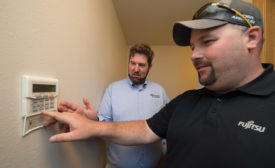Home » energy management
Articles Tagged with ''energy management''
Energy Policy Modernization Act includes fixes for furnace rule, regional standards enforcement
Read More
Millennials Not Ready to Pay for Better Efficiency
Although most claim to want high-end HVAC performance
Read More
Portable Rules Spark Confusion
Manufacturers uncertain about the impact of pending DOE regulations
Read More
Building Energy Management for the Midmarket to Reach $1.6 Billion in 2025
Ongoing education about building energy management system benefits is accelerating midmarket adoption
June 27, 2016
NCI Summit Connects the HPC Dots
Annual conference focuses on implementing three major home-performance concepts
Read More
10 Ways the Service Technician’s Job is Changing
A list of trends, technologies, and ideas shaping the year ahead
Read More
City of Salinas to Save $22 Million with Solar, Efficiency Upgrades
The upgrades include LED retrofits, new HVAC equipment and energy management systems
June 20, 2016
Top Three Emerging Energy Management Trends of the Health Care Sector
Increasing need for cost reduction, rising need for energy conservation, increasing certification
June 15, 2016
Duct Dynasty: Prevent Airflow Problems with Replacement Indoor Coils
Be sure to accurately measure pressure drop and acknowledge the number of fins per inch
Read More
Copyright ©2024. All Rights Reserved BNP Media.
Design, CMS, Hosting & Web Development :: ePublishing













